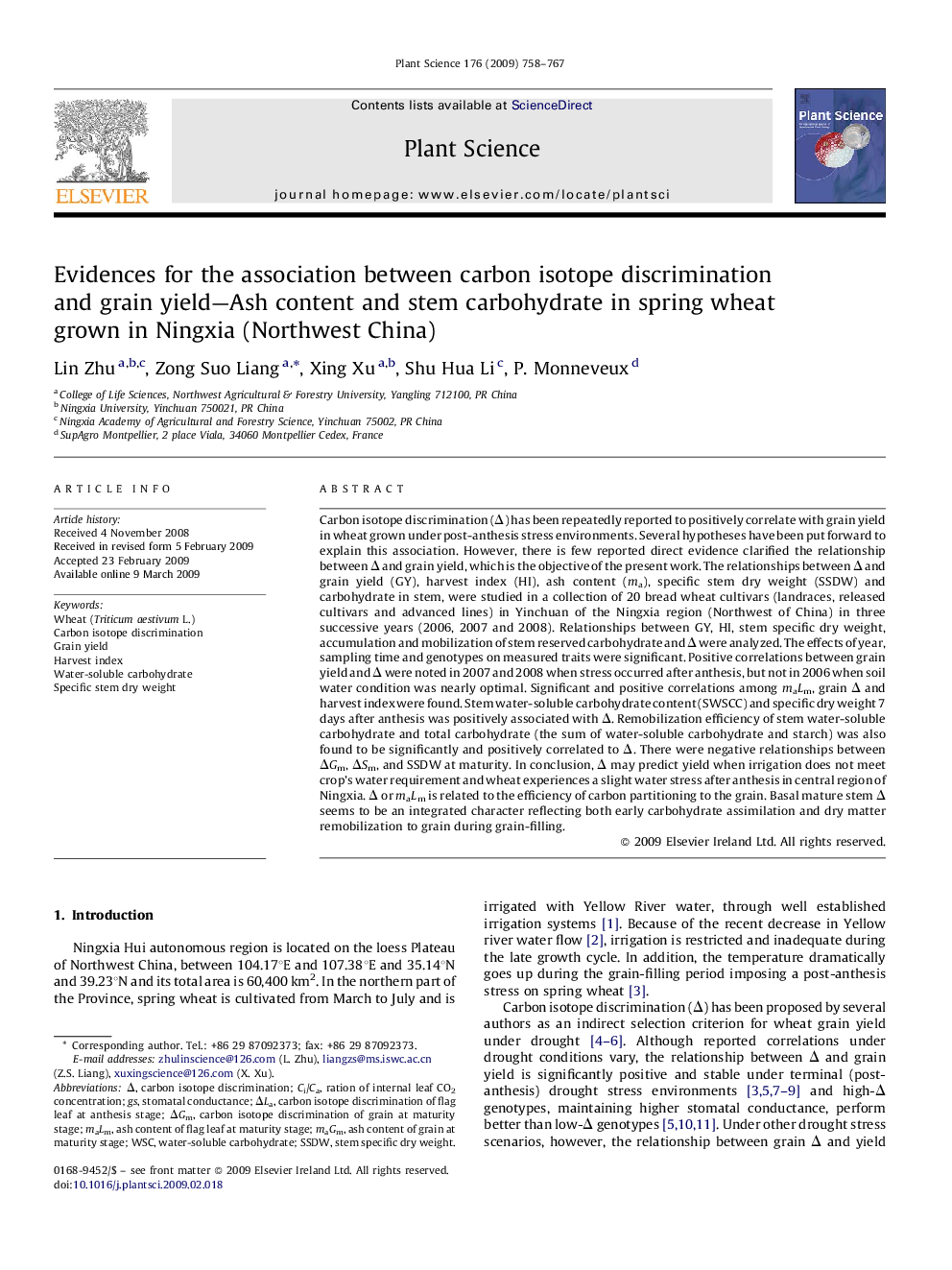| Article ID | Journal | Published Year | Pages | File Type |
|---|---|---|---|---|
| 2018098 | Plant Science | 2009 | 10 Pages |
Abstract
Carbon isotope discrimination (Î) has been repeatedly reported to positively correlate with grain yield in wheat grown under post-anthesis stress environments. Several hypotheses have been put forward to explain this association. However, there is few reported direct evidence clarified the relationship between Î and grain yield, which is the objective of the present work. The relationships between Î and grain yield (GY), harvest index (HI), ash content (ma), specific stem dry weight (SSDW) and carbohydrate in stem, were studied in a collection of 20 bread wheat cultivars (landraces, released cultivars and advanced lines) in Yinchuan of the Ningxia region (Northwest of China) in three successive years (2006, 2007 and 2008). Relationships between GY, HI, stem specific dry weight, accumulation and mobilization of stem reserved carbohydrate and Î were analyzed. The effects of year, sampling time and genotypes on measured traits were significant. Positive correlations between grain yield and Î were noted in 2007 and 2008 when stress occurred after anthesis, but not in 2006 when soil water condition was nearly optimal. Significant and positive correlations among maLm, grain Î and harvest index were found. Stem water-soluble carbohydrate content (SWSCC) and specific dry weight 7 days after anthesis was positively associated with Î. Remobilization efficiency of stem water-soluble carbohydrate and total carbohydrate (the sum of water-soluble carbohydrate and starch) was also found to be significantly and positively correlated to Î. There were negative relationships between ÎGm, ÎSm, and SSDW at maturity. In conclusion, Î may predict yield when irrigation does not meet crop's water requirement and wheat experiences a slight water stress after anthesis in central region of Ningxia. Î or maLm is related to the efficiency of carbon partitioning to the grain. Basal mature stem Î seems to be an integrated character reflecting both early carbohydrate assimilation and dry matter remobilization to grain during grain-filling.
Keywords
Related Topics
Life Sciences
Agricultural and Biological Sciences
Plant Science
Authors
Lin Zhu, Zong Suo Liang, Xing Xu, Shu Hua Li, P. Monneveux,
